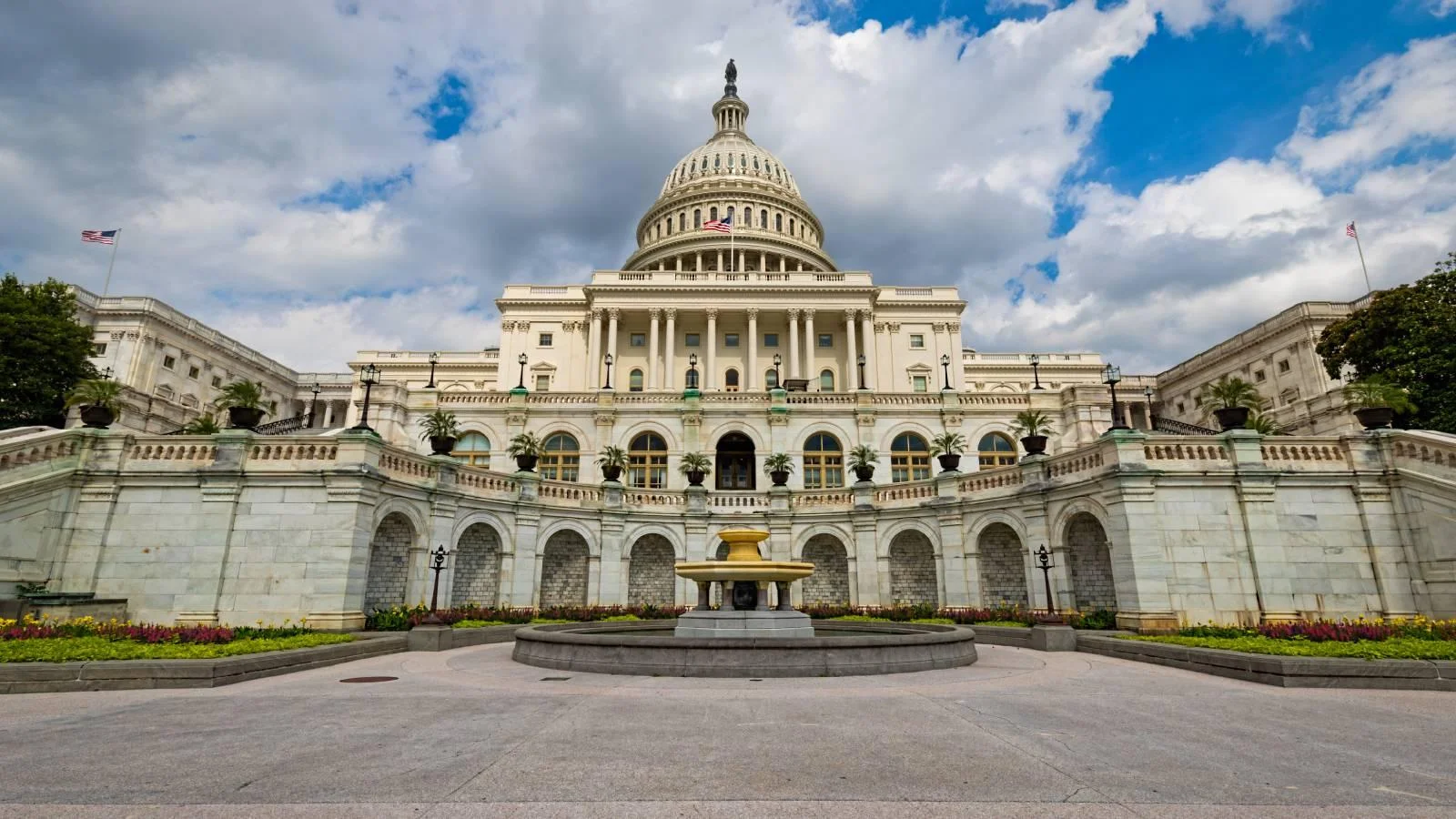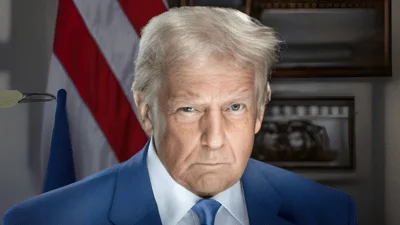The Congressional Record is a unique source of public documentation. It started in 1873, documenting nearly all the major and minor policies being discussed and debated.
“THE IMPORTANCE OF SCIENCE AND TECHNOLOGY TO AMERICA'S FUTURE” mentioning the U.S. Dept. of Commerce was published in the Senate section on pages S5466-S5468 on May 22, 1998.
The publication is reproduced in full below:
THE IMPORTANCE OF SCIENCE AND TECHNOLOGY TO AMERICA'S FUTURE
Mr. FRIST. Mr. President, as a physician and surgeon, I've had the opportunity to witness everyday the remarkable difference that medical science and technology have made in people's lives.
In just the short space of time that I've been practicing medicine--
less than 20 years--I've seen how the products of medical research and development--lasers, mechanical cardiac assist devices, mechanical valves, automatic internal defibrillators--have not only saved but vastly improved the quality of hundreds of thousands of lives every year.
And as a physician, I can envision a future in which science and technology will roll back the current frontiers of medical knowledge, identify the causes, and eliminate most of the effects of the diseases that now plague mankind. It's absolutely astounding to contemplate.
However, as a Senator, I've been afforded a different opportunity. And that's the opportunity to see, and learn, and understand -- not just medicine--but America. And, as a Senator, I can envision the difference that science and technology will make in the life of our Nation.
Mr. President, as a country of immigrants we are a people drawn from diverse backgrounds and ideas. And there is no doubt that this unique amalgamation is one source of our remarkable strength and resiliency. But as diverse as our individual heritages are, a common thread runs through all of us. That thread is our common heritage as Americans, and it unites and strengthens us as well.
Our forefathers came to this land to build a new life. Not surprisingly, they in turn created a nation of builders. We build homes. We build communities. We build factories and businesses. But most of all, Mr. President, we build futures--because we also build hope.
As a people, Americans rise to a challenge. And as a nation --to every challenge we've ever faced. At no time was this more apparent than during World War II when we were forced to make drastic sacrifices to survive. The legacy of those choices has driven our economy and our policies ever since, and one of those legacies is the federal investment in science and technology.
Science and technology have shaped our world in ways both grand and small. We've put men into space and looked into the farthest corners of the known universe. We've broken the code of the human genome and begun to dismantle previously incurable disease. We've created a virtual world and a whole new realm called cyberspace. Yet, technology also surrounds us in millions of little ways we no longer even notice: the computers that run our cars; the cellular phones that keep us in touch; the stop lights, the grocery store checkouts, the microwaves that help our lives run smoother and faster.
In my Senate office alone, technology has made a tremendous difference--both in terms of helping me keep in touch with the people of Tennessee, and by helping them access important information.
For example, while in the past Senators kept in touch by phone, letter, and trips to the state, today I regularly schedule video conferences with Tennessee schools--from the elementary to the university level. In March I spoke to the entire student body of George Washington Elementary School in Kingsport. Certain students were selected by their teachers to ask questions, and the rest watched on closed-circuit television. In April, I visited with students from Austin Peay State University in Clarksville. So, it no longer takes a week-end to speak with my constitutents face-to-face. At 11:50 that morning I was voting on the floor of the United States Senate; at noon, I was having a conversation with students in Tennessee.
And thanks to the Internet--another remarkable product of federal research funds--this one funded by DARPA (Defense Advanced Research Projects Agency)--my Senate Website not only allows me to share my voting record, press releases, and speeches with constituents, it allows them to voice their opinions and concerns and ask questions about issues before the Senate.
Our office also uses a digital camera--which allows photographs to be downloaded, printed, and disseminated almost instantly. On a recent trip to Bosnia, for instance, I took pictures of our troops from Tennessee, downloaded them into my laptop, e-mailed them to local newspapers in Tennessee, as well as to my Washington office where they were posted on the Web for all to see. The whole process took only a few minutes.
As we can see, today's world runs on technology, and through its investment in research and development, the federal government has played a significant role in creating it. In fact, more than 56 percent of all basic research is produced with federal funds.
Much of our economy runs on technology as well. Half of all U.S. economic growth is the result of our technical progress. Technology helps provide new goods and services, new jobs and new capital, even whole new industries.
Developments in chemicals technology, for example, have lead to the production of new petrochemicals, agrochemicals, food and pharmaceuticals, and advanced health care materials such as those used in skin grafts.
Information technologies have spawned whole new industry segments in cellular communications, electronic commerce, and global information access.
The space imaging and remote sensing technology that produced the U.S. Global Positioning System, has in turn become a core technology in several industries key to the U.S. economy, including agriculture, aviation, construction, land use, transportation, and mining. And those industries have themselves produced dramatic advancements. In agriculture alone, GPS- enabled precision farming has allowed more limited applications of pesticides and fertilizers, which in turn have resulted in less environmental damage at lower costs with more precise crop yield determinations.
Without a doubt, technology is the principal driving force behind our long-term economic growth and our rising standard of living. In fact, according to the Office of Science and Technology Policy (OSTP), technology is the single most important factor in sustained economic growth. Not only is the performance of U.S. businesses and their contributions to economic growth directly linked to their use of technology, but as cited in a study conducted by the Department of Commerce, manufacturing businesses that used eight or more advanced technologies grew 14.4 percent more than plants that used none--and, production wages were more than 14 percent higher.
For any who might still remain unconvinced that our federal investment in science and technology has not produced phenomenal returns, let me give just two quick examples.
Over the last three decades, the Department of Defense has funded $5 billion in university research in information technology. Those programs alone created one-third to one-half of all major breakthroughs in the computer and communications industries. Today, those businesses account for $500 billion of GDP--a return on our investment of 3,000 percent! In fact, studies of just one university alone--MIT--found that in Massachusetts MIT grads and faculty founded over 600 companies that produced 300,000 jobs and $40 billion in sales. In Silicon Valley, MIT grads founded 225 companies which produced 150,000 jobs and more than
$22 billion in sales.
In one industry alone--biotechnology--government's $43 million annual investment has not only produced the human capital of the biotech industry--scientists, engineers, managers--and new knowledge that's led to an understanding of the molecular basis of disease, but also new companies and new wealth. To, again, use MIT as an example, in Massachusetts alone, MIT-related companies have produced 10,000 new jobs, $3 billion in annual revenues, and 100 new biotech patents licensed the U.S. companies that have induced investment of $650 million. Those companies now produce nine of the 10 FDA-approved biotech drugs that stop heart attacks and treat cancer, cystic fibrosis and diabetes, and we've only just begun to tap the potential returns of this rapidly advancing new field.
But universities are not just the fountainhead of innovation. The are the wellsprings that provide the intellectual underpinning of future progress. They train the people who will translate new discoveries into new products and processes and industries.
For example, Jennifer Mills, a physics undergraduate from Portland, Oregon, wrote much of the computer code responsible for the remarkable images sent back to Earth by the Hubble telescope. James McLurkin, an undergrad engineer, created a tiny robot that may well revolutionize certain kinds of surgery--enabling surgeons to operate inside the body without ever touching the patient!
america's investment in science and technology must continue
Clearly, America's investment in science and technology must continue. The two central questions that Congress must ask and answer, however, are: (1) Will science and technology continue to be as great a Congressional priority in the future as it has been in the past; and
(2) Will the kind of financial investment necessary to sustain future progress ever be possible in light of our other growing financial commitments?
Mr. President, the history of the last five decades has shown us that there is a federal role in the creation and nurturing of science and technology, and that--even in times of fiscal austerity--that commitment has been relatively consistent.
However, the last three decades have also shown us something else: fiscal reality. The simple truth is there's just not enough money to do everything we'd like to do.
It took some time for us to realize that, and by the time we did, we found ourselves in a fiscal situation that is only now being addressed. And--budget surpluses notwithstanding--discretionary spending is under immense fiscal pressure.
One only has to look back over the last 30 years to confirm the trend. In 1965, mandatory federal spending on entitlements and interest on the debt accounted for 30 percent of the federal budget. Fully 70 percent went toward discretionary programs--research, education, roads, bridges, national parks, and national defense.
Today-- just 30 years later-- that ratio has been almost completely reversed: 67 percent of the budget is spent on mandatory programs and interest on the debt; leaving only 33 percent for everything else, including research. In fact, total R&D spending today as a percentage of GDP is just .75 percent--as compared to 2.2 percent in the mid-1960s when superpower rivalry and the race to space fueled a national commitment to science and technology. As the BabyBoom generation begins to retire and the discretionary portion of the budget shrinks even further, this situation will only grow worse.
Thus, Mr. President, we have both a long-term problem: addressing the ever-increasing level of mandatory spending; and a near-term challenge: apportioning the ever-dwindling amount of discretionary funding.
The confluence of this increased dependency on technology and decreased fiscal flexibility has created a problem too obvious to ignore: Not all deserving programs can be funded; Not all authorized programs can be fully implemented.
In other words, Mr. President, the luxury of fully funding science and technology programs across the board has long since passed. We must set priorities.
frist vision for the future: how we ensure federal support for science and technology
Mr. President, I commend my colleagues, Senators Gramm, Lieberman, Domenici, and Bingaman, for commencing a debate on funding for science and technology that is long overdue. I firmly believe that Congress must reaffirm our national commitment to science and technology, and redouble its efforts to ensure that funding is not only maintained but increased. However, I also believe that funding levels alone are not the answer.
What we really need, Mr. President, is a strategy for the future--a vision that not only provides adequate levels of funding, but ensures that that funding is both responsible and sustainable over the long term.
I believe we do it by establishing and applying a set of first or guiding principles that will enable us to consistently ask the right questions about each competing technology program; focus on that program's effectiveness and appropriateness for federal funding; and most importantly, make the hard choices about which programs deserve to be funded and which do not. Only then can Congress be assured that it has invested wisely and well.
What are these first principles? There are four:
First, federal R&D programs must be good science. They must be focused, not duplicative, and peer-reviewed.
Because there is strength in diversity, they must support both knowledge-driven science--which broadens our base of knowledge and advances the frontiers of science; and mission-driven science requirements--which push the state-of-the-art in specific technology fields.
Second, programs must be fiscally accountable. Especially in today's fiscal environment, wasteful administrative habits can't be tolerated.
Third, they must have measurable results. Programs must achieve their aims. Their effectiveness must be evaluated-- not on the basis of individual projects which can have varying rates of success -- but on basis of the entire program.
Fourth, they must employ a consistent approach. Federal policy must be applied consistently across the entire spectrum of federal research agencies. High quality, productive research programs must be encouraged regardless of where they are located.
Accompanying the four first principles, are four corollaries:
(1) Flow of Technology. The process of creating technology involves many steps. However, the current federal structure clearly reinforces increasingly artificial distinctions across the spectrum of research and development activities. The result is a set of programs which each support a narrow phase of research and development, but are not coordinated with one another.
Government should maximize its investment by encouraging the progression of a technology from the earliest stages of research up to commercialization, through funding agencies and vehicles appropriate for each stage. This creates a flow of technology, subject to merit at each stage, so that promising technology is not lost in a bureaucratic maze.
(2) Excellence in the American Research Infrastructure. We must foster a close relationship between research and education. Our investment at the university level creates more than simply world class research. It creates world class researchers as well. We must continue this strong to a research infrastructure, and find ways to extend the excellence of our university system to primary and secondary educational institutions.
(3) Commitment to a Broad Range of Research Initiatives. Revolutionary innovation is taking place at the overlap of research disciplines. We must continue to encourage this by providing opportunities for interdisciplinary projects and fostering collaboration across fields of research.
(4) Partnerships among Industry, Universities, and Federal Labs. Each of these has special talents and abilities that complement the other. Our federal dollars are wisely spent by facilitating the creation of partnerships, in effect creating a whole that is greater than the sum of its parts.
These first principles and their four corollaries, Mr. President, provide a framework that will not only guide the creation of new, federally funded research and development programs, but validate existing ones. Taken together, they create a powerful method for elevating the debate by increasing Congress' ability to focus on the important issues; decreasing the likelihood that it will get sidetracked on politically-charged technicalities; and ensuring that federal R&D programs are consistent and effective. They will also help us establish both a consistent set of national goals, and a vision for the future.
looking to the future
However, Mr. President, even if we are to accomplish all that we hope-- in terms of setting and fully funding our current science and technology priorities, creating a vision for the future, and developing a strategy for attaining it--our work will still be incomplete if we fail to accomplish one more thing: We must prepare the next generation for the century to come.
We must create a scientifically-literate work force capable of prospering in a world not only driven by a science and technology economy, but dependent upon science and technology excellence.
Yet as evidenced by the results of the latest TIMSS (Third International Math and Science Study) study, America's high school seniors are among the industrial world's least prepared in math and science. And in math and physics, no nation performed more poorly than the United States.
Why? Part of the reason is teacher qualification--28 percent of all high school math teachers, and 55 percent of all physics teachers neither majored nor minored in these subjects.
Part of the reason is unrealistic curricula--which forces teachers to teach a little bit of everything, but nothing in depth.
Part of it has to do with textbook publishers who seem to be more concerned with continually adding new material than with advancing students' skills.
And part of it, no doubt, has to do with the fact that, in many cases, we simply have not fostered in our children the same spirit of wonder that was fostered in us.
Mr. President, it's time to, once again, get America excited about science.
It's time we recovered our heritage, and became again a nation of people who build the future--a future filled with hope and promise.
And it's time we inspired the next generation to continue the process of exploration and innovation that made America possible in the first place, and that will take her into a 21st century future brighter than any point in her past.
Mr. President, as a physician, as a scientist, as a Senator, those are my goals. I hope they are the goals as well of every Member of this body. For whether we, as a nation, use and develop the knowledge we gain to its highest potential for the benefit of ourselves, our Nation, and our fellow man depends, in large measure, on whether we are able to achieve them.
Mr. President, I thank the chair.
____________________









